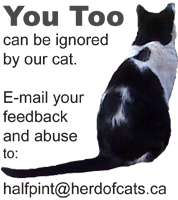You are hereProject Retirement, ep 7
Project Retirement, ep 7
The one where I stare at a chart for an hour.
So, I signed up for the Basic Coastal Navigation course and started it in January 2021. Because of COVID, you do it from home. I received my learning kit in the mail: ruler, divider, pencil, chart. Huge chart. Takes-the-whole-damn-kitchen-table huge chart. They also sent me the login credentials to access the course material in advance of the actual Zoom classes. So I started on the "self test" of each chapter without even reading the material. That went very well, if your objective is to draw lines into as many sunken wrecks and underwater reefs as possible...
There's also the realization that charts give you a good idea of what is under the water... 3 years ago. Also, some charts show depth in feet, and some in meters. Don't screw that up. At this point, I am sure Stormblade is starting a betting pool on how soon I'm going to sink whatever boat I end up purchasing. That being said, the course was reasonably easy, but I can't shake the feeling that some of my classmates have high chances of beaching their boats if they get stuck in fog.
Marine navigation is the "reverse" of aircraft navigation. Both have the same objective mind you: to not slam into mountains; except that aircraft have a god-mode... if you are uncertain about what is in front of you, go up. Not so with boats.
Modern cruising is popular mostly because of two particular technologies: GPS and the Internet. You can download digital charts from the Internet, put them on a computer, and then use GPS to determine where you are on that chart, and don't go anywhere near an obstacle. GPS resolution is roughly 10 meters, so even in THICK fog, you can navigate up to 20 meters of an obstacle with a pretty damn good assurance that you won't slam into it.
There are a few considerations:
* Your chart is up to date.
* Your chart has all obstacles and depths in it.
* Your GPS is operational and correctly calibrated (you must have more than 1 or 2 satellites locked)
* The GPS system must not be "hacked" (I'm looking at you, Russia)
* Other ships must somehow make their presence known, in fog or at night.
What if you do not have access to those systems, or they fail on you ? What is your backup ?
That's why all costal and inter-coastal cruisers get up-to-date paper charts, and at least one boat compass. The rest is rulers and math. It's not complex math, but it is quite a bit of it. You also need "time". You cannot just "wing it" and figure out a safe passage between two underwater reefs just by eyeballing the chart and your compass (unless you have at least a few decades of experience I imagine, certainly I can't after a simple introductory class). You must take the time to sit down (preferably at anchor) and plan everything from the moment you bring up the anchor to the moment you throw it out again. You must have a plan of what to do if a storm hit you at any time, and what to do if the wind simply shifts. All of these plans and backup plans gets written out on paper before you go out, and that plan stays near your eyes while you are under way.
You biggest help are "bearings", where you look at the coast and find something obvious like a mountain or a church spire, and find it on your chart, then figure out your boat's angle to it. With two bearings you can calculate, within a few meters, where you actually are. "That's simple enough then, what's the big deal?" you ask. Well, the chart and your compass don't speak the same language. The chart is a very static thing, while magnets (how do they work ?) are all sorts of random... The earth's north pole has always been the same on charts, by human design, it never moves. The planet, which typically doesn't give two shits about humans, constantly moves its magnetic north pole. It moves in a predictable pattern, extremely slowly, but moves nonetheless. So the top of the chart is "north" but your handheld compass doesn't point to the top of the chart, it points to whatever is the current magnetic north. The chart tells you the difference between the chart's "true north" and the current "magnetic north". That's where the math starts. If your hand-held compass tells you that the small beach to your left is at 270 degrees magnetic (straight up west of you) and the chart tells you that everything on the chart is "10 degrees to the east from true" then your beach is actually to 280 degrees on the chart. That's called "variation".
What's worse is that your boat compass is also lying to you. Remember that a compass is really a magnet, and magnets are attracted to the magnetic north pole, but they are also attracted to large pieces of metal. Even when you consider that boats are mostly fibreglass these days, they also have large motors, and water and fuel tanks, and those things are usually close to the fixed compass that is sitting next to you while you are steering the boat. While the magnetic north revolves around you, if you think of your boat as a fixed point, your motor and fuel tanks don't move, so if you figure out how much those things are influencing your compass, you keep a list of these "deviations". With this, you can easily figure out "when my steering compass says '356 degrees' I know that really means I point at 0 degrees (full magnetic north) because at that angle the motor tugs on the compass just a little bit towards west." And now that the charts also tells me that its variation is 10 degrees east, then we finally have all of the numbers we need to translate between the steering compass and the chart, which is 10 degrees "true" on the chart when your steering compass is showing 356 degrees.
The course expresses this as T V M D C : True plus Variation is Magnetic, Magnetic plus Deviation is Compass. You add to the west, you subtract to the east.
That's it, if you understood all of this, you are pretty much a novice navigator :-)
EDIT: I had put "deviation" instead of "variation".
-

- Login to post comments
- 60 reads







